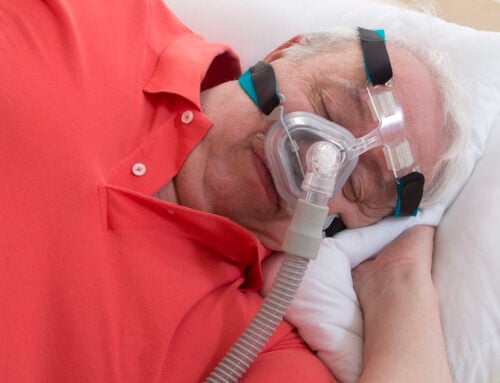Learning To Live With COPD
Chronic obstructive pulmonary disease (COPD) is often caused by constant exposure to irritants, especially cigarette smoke. Along with difficulty breathing, having COPD also increases a person’s risk of developing other severe conditions such as lung cancer and heart disease. However, making lifestyle and behavioral changes can improve outcomes and the quality of life for COPD patients.

1. Monitor carb intake
People newly diagnosed with COPD might be surprised to find that food can impact respiratory function. But the body’s process of breaking down food into fuel can increase carbon dioxide production, with carbs producing the most waste byproducts. Managing carb intake can improve breathing in COPD. Experts recommend choosing complex carbs over simple carbs and eating 20 to 30 grams of fiber every day.
2. Get and stay active
Having COPD doesn’t mean that exercise is off-limits. Low impact activities like stretching, gentle aerobics, and even resistance training can improve flexibility and boost mood. However, COPD patients should avoid exercising when feeling sick, struggling with chest pain, or when low on oxygen.
3. Stay away from smoke
Unsurprisingly, people with COPD should avoid being in environments with cigarette smoke. Along with not smoking, COPD patients should avoid being around people who smoke and even be mindful of whether a person just finished smoking, known as thirdhand smoke, because the smoky smell can linger in the air and on clothing, exacerbating COPD symptoms.
4. Swap carpeting for hard floors
Carpeting can be a carrier for common irritants like pollen, dust, allergens, and pet dander. While not every person can afford to remove carpeting for hard floors, the option can be ideal for people with respiratory systems easily triggered by common pollutants. Alternatively, get a vacuum with an air filter if removing carpeting isn’t a feasible choice.
5. Prioritize clean air
Dust, dirt, and allergens can still linger in the air, even if a home doesn’t have carpeting. If a COPD patient still struggles with irritants in the air, consider using an air purifier to help remove pollutants. Ideally, focus on an air filter that features a HEPA filter. Likewise, avoid letting clutter accumulate as excess junk can encourage dust. Also, consider opting for natural cleaning products as some chemical-based cleaners can irritate the lungs and make breathing difficult.
Proactively managing COPD
While COPD may require initial adjustments on the part of the patient, the diagnosis doesn’t represent an end to quality of life. Along with maintaining doctor’s appointments and taking any medication as prescribed, COPD patients can also take a proactive stance to sustain good health and respiratory function. Simple changes around the home and with behaviors can aid in not only improving function but minimizing any stress associated with the condition.




